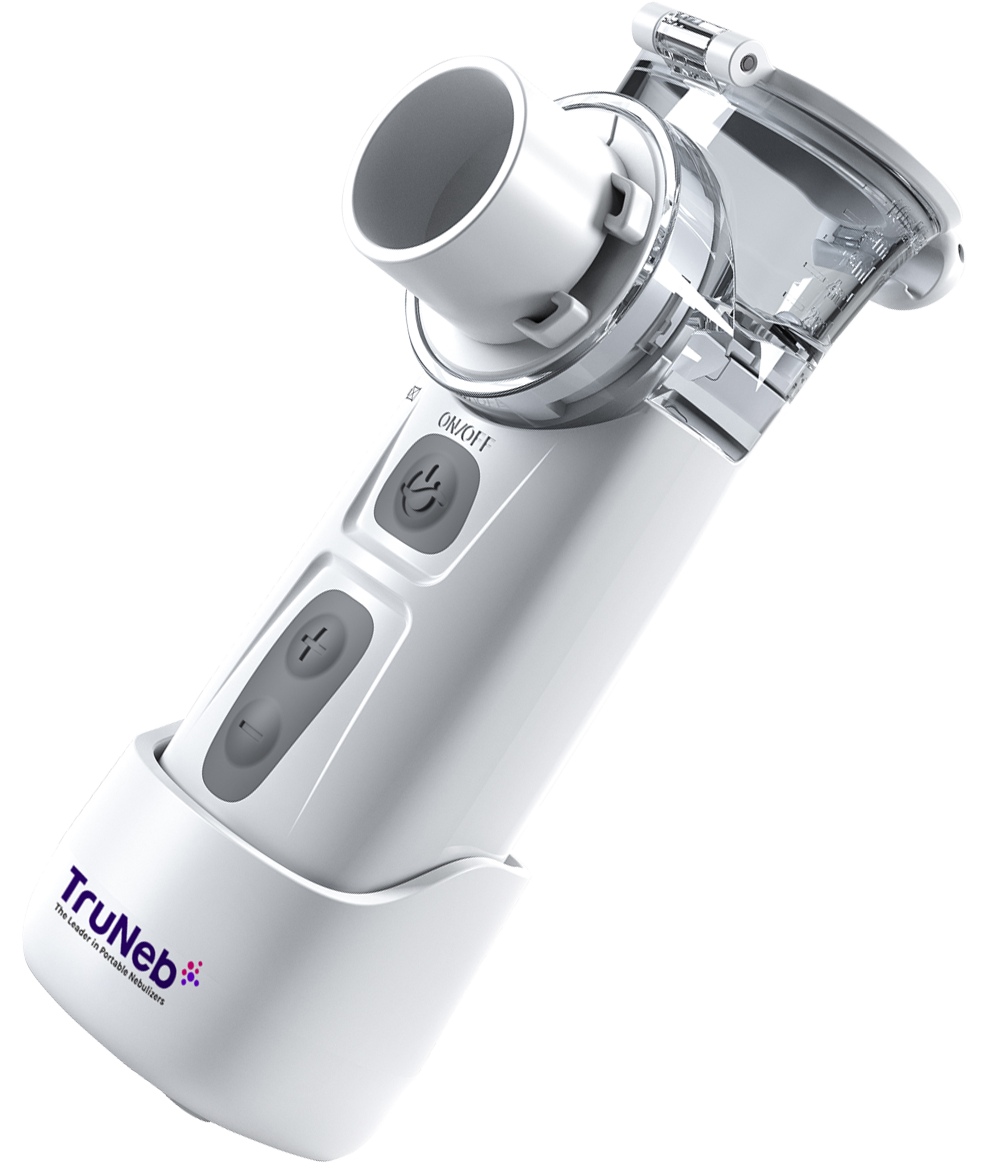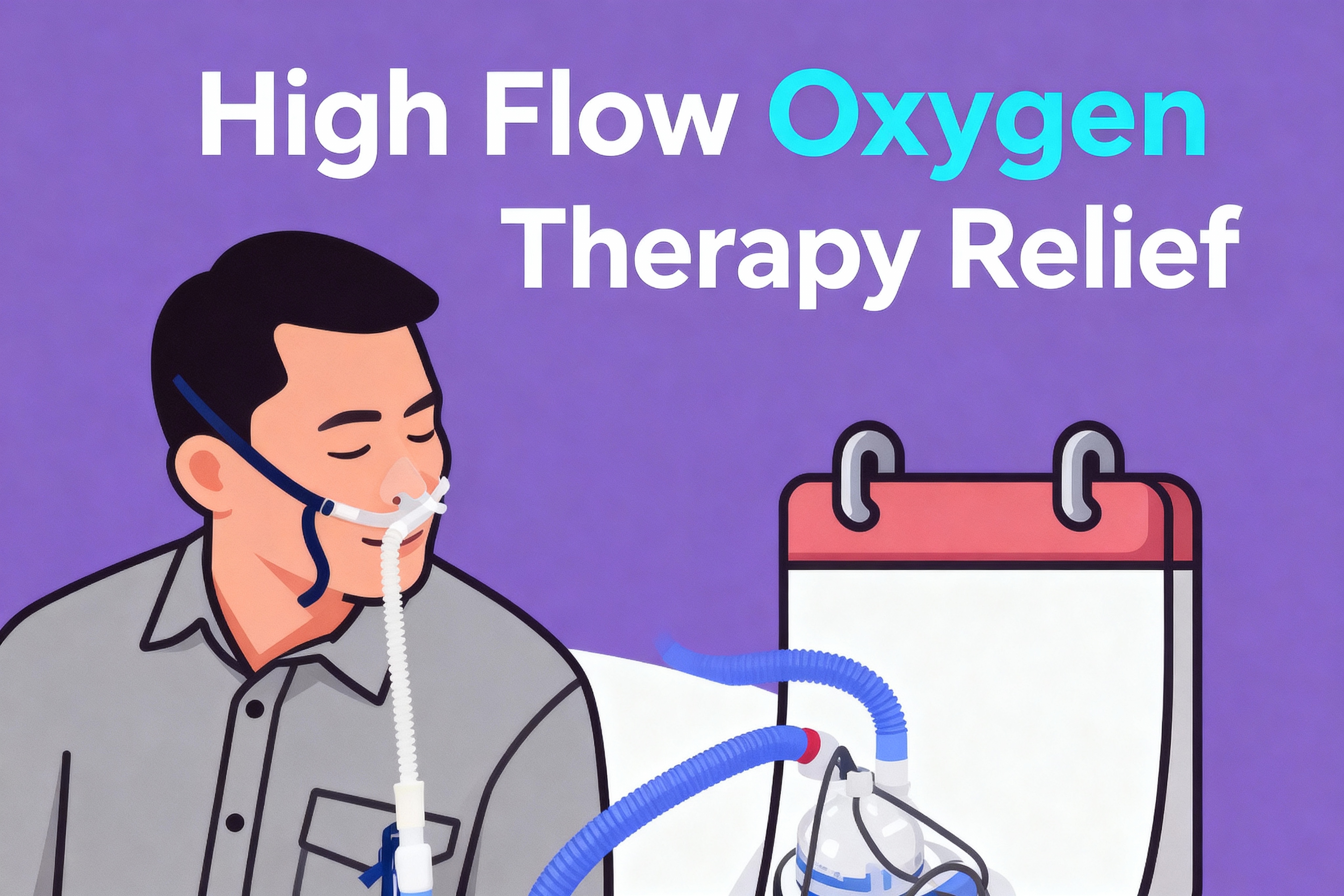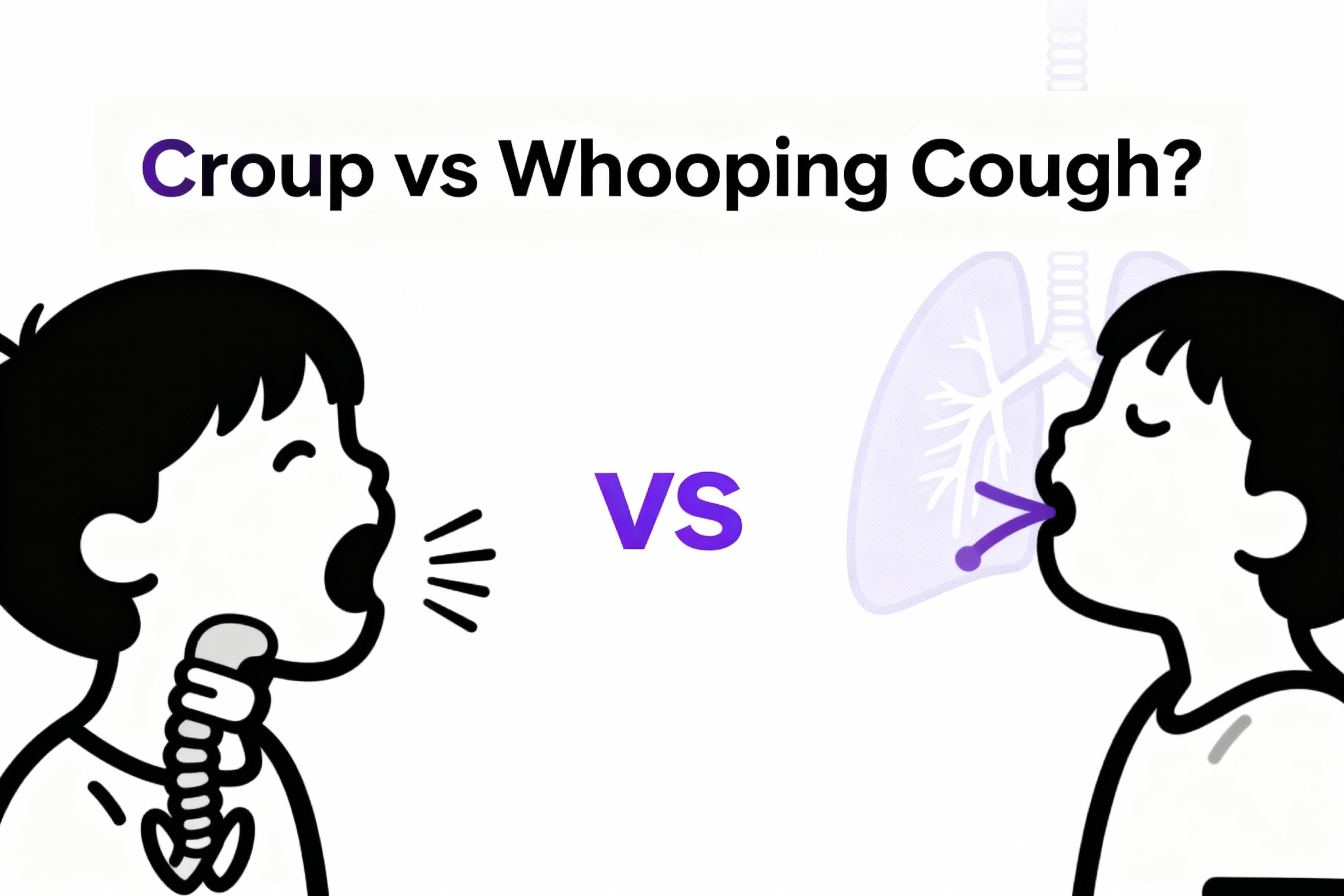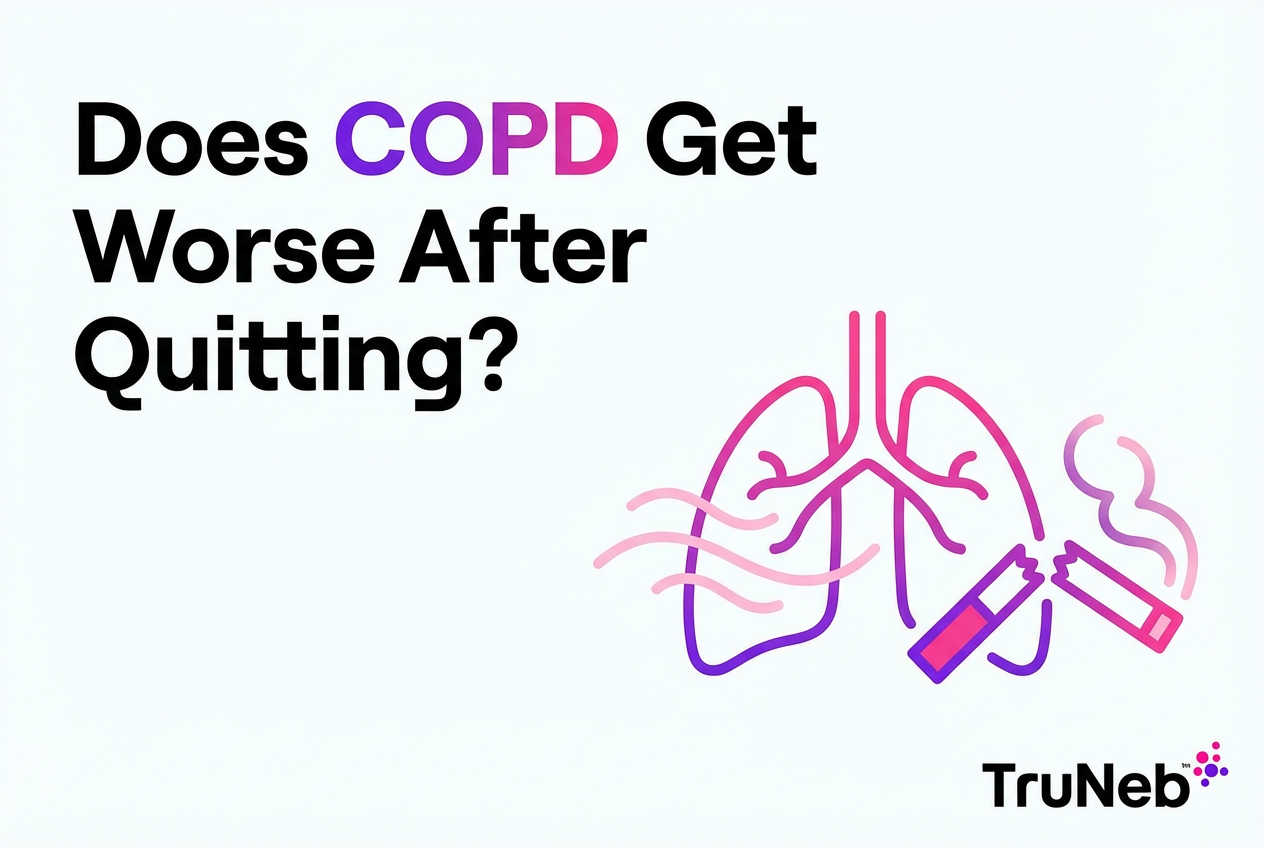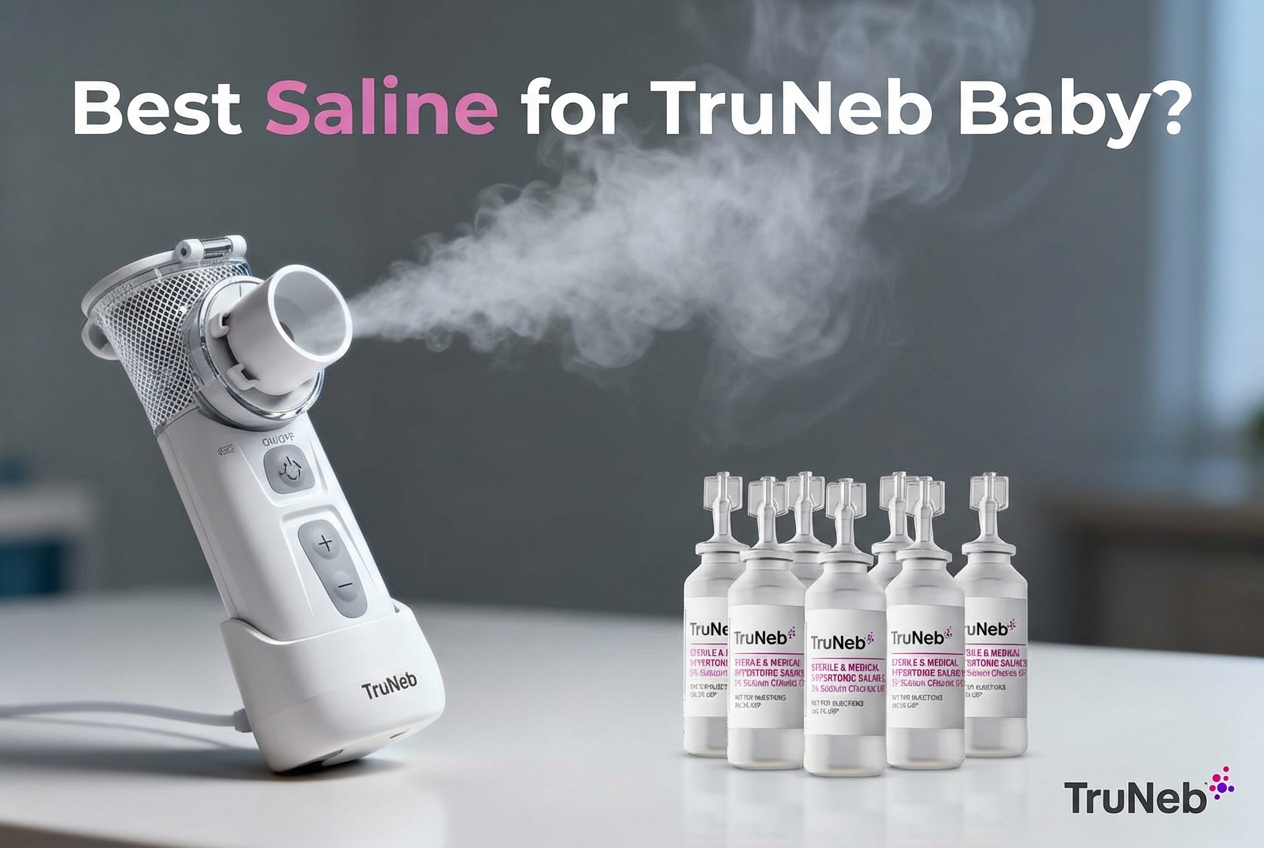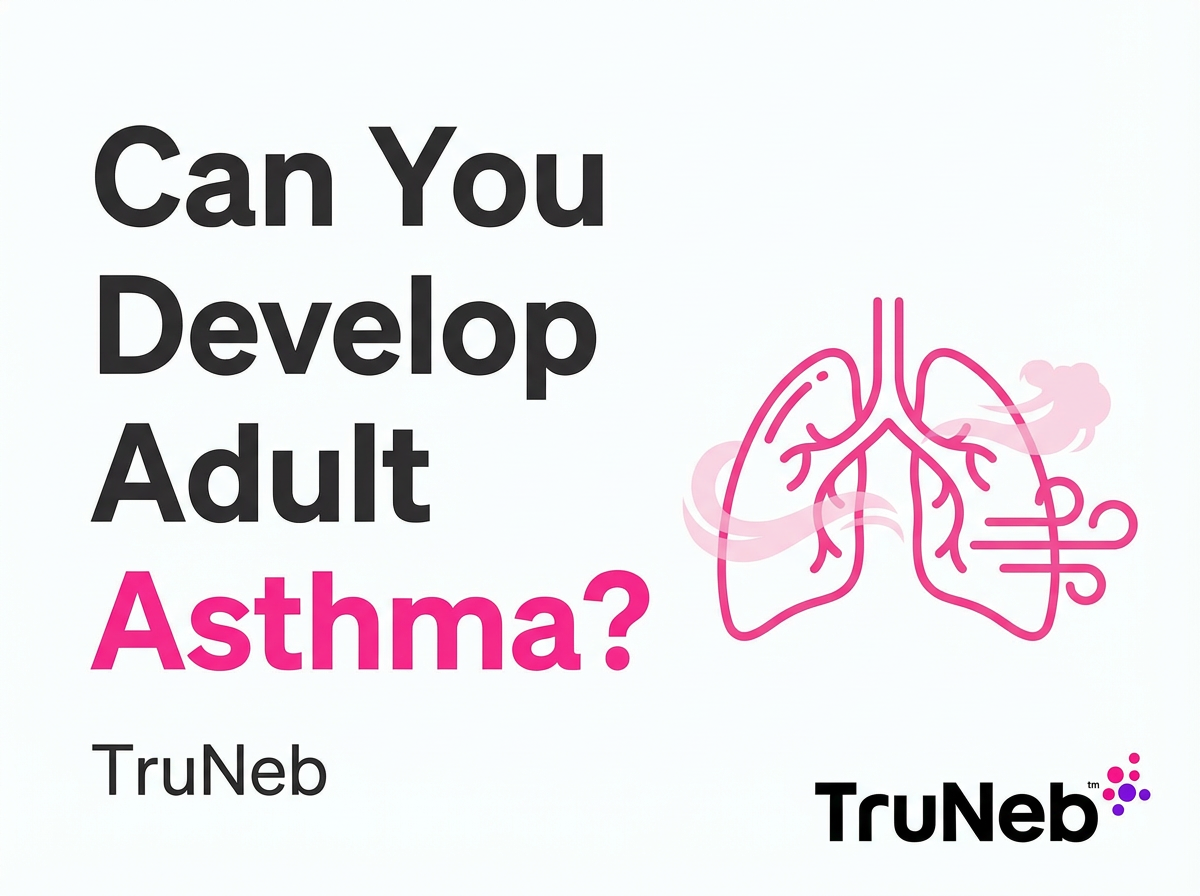On this page
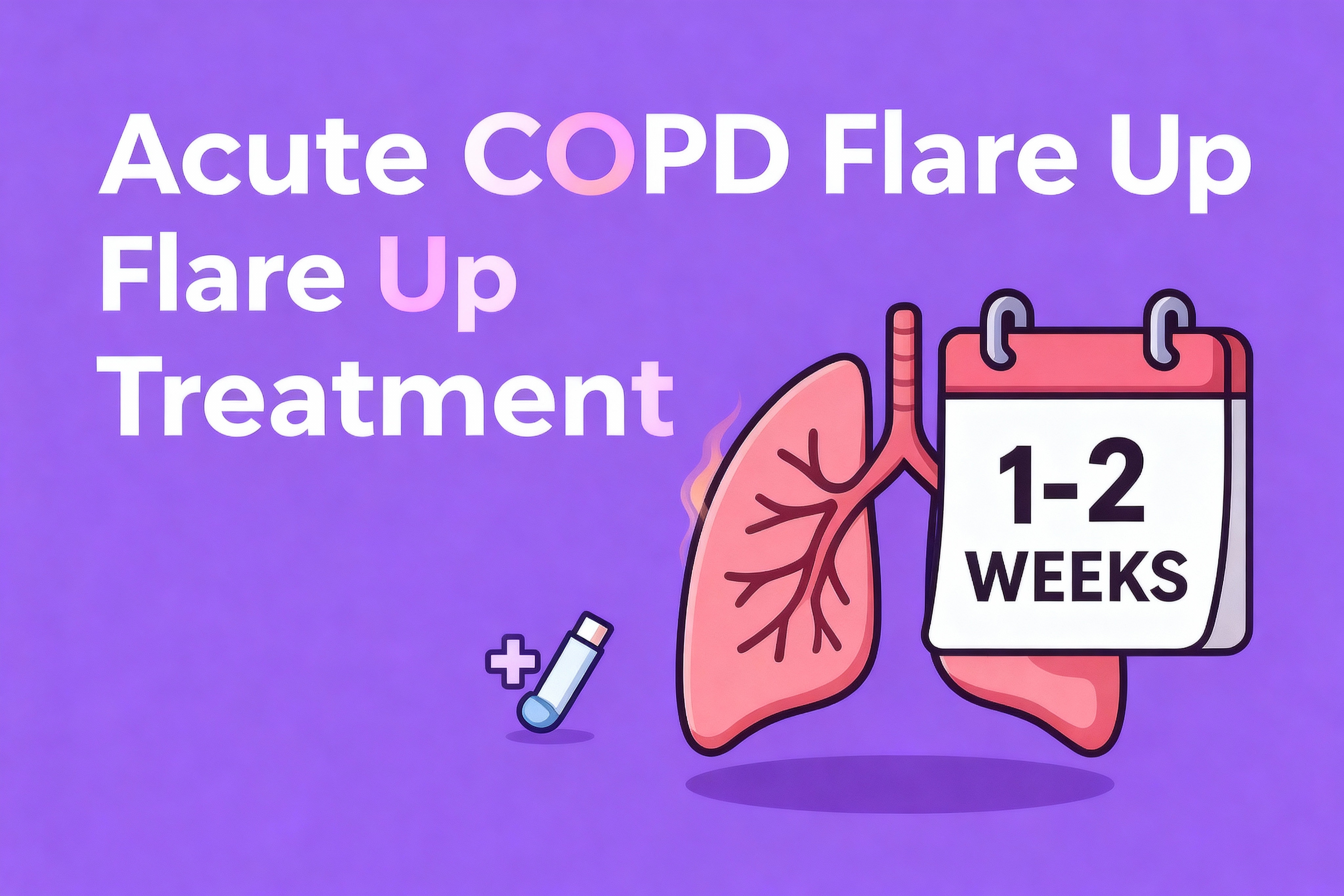
Treatment for Acute COPD Exacerbation: How to Get Through a COPD Flare-Up
An acute COPD exacerbation (also called a COPD flare-up) is a sudden worsening of your usual COPD symptoms. Doctors sometimes call this an acute exacerbation of COPD (AECOPD), and it’s usually triggered by respiratory infections or irritants like smoke or pollution.
Breathing gets harder. Your cough and mucus change. You feel more tired and drained.
Fast, right treatment for acute COPD can ease symptoms and lower the chance of landing in the hospital.
A simple rule of thumb: if your breathing feels clearly worse than your normal “bad days,” and you need extra medicine to cope, you might be having an acute COPD exacerbation.
Always check with your doctor before changing your COPD medicines.
An acute COPD exacerbation is a sudden, serious worsening of your usual breathing symptoms that needs extra treatment and quick attention from your doctor.
Recognizing an Acute COPD Exacerbation
You know your lungs better than anyone. Still, it helps to have clear signs that a flare is starting.
Flares are commonly set off by respiratory infections (viruses or bacteria), breathing in polluted air or smoke, or sudden cold weather.
Common signs of a COPD exacerbation include:
- Breathing is harder than your usual “bad days,” especially when talking or walking.
- Your cough suddenly worsens or becomes more frequent.
- Your mucus (sputum) increases in amount.
- The color of your mucus turns yellow, green, or darker than usual.
- You feel more wheezy, tight in the chest, or hear new whistling sounds.
- You feel more tired or weak, and simple tasks wipe you out.
- You might have a low-grade fever, chills, or feel like you are “coming down with something.”
Doctors often define an exacerbation as a “worsening of breathing symptoms beyond normal day-to-day changes that needs extra treatment.”
If these changes appear over hours to a few days, start your action plan and contact your doctor for guidance.
A COPD flare-up means your breathing, cough, or mucus clearly worsen beyond your normal “bad days” and you need extra help to cope.
Immediate At-Home Treatment: Your COPD Flare-Up Action Plan
When a COPD flare hits, the first 15–30 minutes matter.
Here’s a simple action plan you can use at home. Use it with the written COPD action plan you and your doctor create together.
- Use your rescue bronchodilator
- Use your short-acting bronchodilator as your doctor prescribed in your COPD action plan (such as albuterol or salbutamol).
- If you use an inhaler (MDI), use a spacer and take slow, deep breaths.
- If you also have a nebulizer, follow your doctor’s instructions on whether to use it instead of, or in addition to, your inhaler.
- A portable mesh nebulizer like TruNeb™ that you use with medication your doctor prescribed can be helpful during a flare because you can breathe normally while it delivers a fine mist of medicine.
- Fix your posture and breathing
- Sit upright in a firm chair, with feet flat on the floor.
- Lean slightly forward with your elbows on your knees (tripod position).
- Use pursed-lip breathing: breathe in gently through your nose, then breathe out slowly through lips as if you’re blowing out a candle.
- Use your home oxygen (if prescribed)
- If you’re on home oxygen, use it exactly as your doctor prescribed.
- Most COPD guidelines aim for an oxygen saturation (SpO₂) around 88–92% during a flare, but your doctor will tell you the right range for you.
- Don’t turn your oxygen up far above your usual setting without talking to your doctor.
- Recheck how you feel after 5–15 minutes
- If your breathing eases, keep resting and follow your written action plan.
- If your written action plan includes a second dose of your rescue inhaler or nebulizer after a short break, follow those instructions if symptoms are still strong.
- Call for medical help if you’re not improving
- If you still struggle to breathe, feel worse, or are unsure what to do, call your doctor or emergency services.
- Don’t wait hours hoping it will just “wear off.”
Don’t change doses on your own—follow the plan you and your doctor made together.
Simple rule: if your usual rescue medicine is not helping or the flare is getting worse, you need medical help.

Rapid-Relief Medicines: Bronchodilators (Inhalers and Nebulizers)
Short-acting bronchodilators are the main rescue treatment for an acute COPD exacerbation.
They relax the muscles around your airways so more air can move in and out.
Types of rescue bronchodilators
- Short-acting beta₂-agonists (SABA): albuterol/salbutamol, levalbuterol.
- Short-acting anticholinergics: ipratropium.
- Many people use them together in one inhaler or nebulizer mix.
Guidelines list inhaled short-acting bronchodilators as first-line treatment in a flare.
Inhaler (MDI) vs nebulizer
Studies show that a metered-dose inhaler with a spacer can work as well as a nebulizer when used correctly.
But during a bad flare, timing your breath with an inhaler can be hard.
A nebulizer turns liquid medicine into a mist you breathe in normally over several minutes. Hospitals sometimes give back-to-back nebulizer treatments when symptoms are severe.
| Feature | Inhaler with spacer | Nebulizer (mesh or jet) |
|---|---|---|
| How medicine is delivered | Pressurized puff you inhale in one or two deep breaths through a spacer. | Continuous mist you breathe in normally over several minutes. |
| Best for | People who can coordinate a deep breath and hold it briefly. | People who are very short of breath, fatigued, or struggle with inhaler technique. |
| Common setting | Day-to-day home use and mild to moderate flare-ups. | Home use during tougher flare-ups and in clinics, ambulances, and hospitals. |
| Advantages | Small, quick to use, and does not need a power source. | Little coordination needed; easy to use while breathing normally. |
| Limitations | Works less well if technique is poor or you cannot take a deep breath.1 | Takes longer per treatment and needs device cleaning and maintenance. |
1 When inhalers are used with correct technique, studies show they can work as well as nebulizers for delivering rescue bronchodilators.
Warning: Do not use “steam inhalers” to take COPD medicine. They are not the same as nebulizers and can be unsafe for your lungs.
A small mesh nebulizer like TruNeb is handheld, quiet, and easy to use at home or on the go. It can be a helpful backup if you struggle with inhalers when you are very short of breath.
Key takeaway: in a COPD flare, use the rescue device you can use well. Technique matters as much as the device itself.
Anti-Inflammatory Treatment: Corticosteroids
During an acute COPD exacerbation, your airways are more swollen and irritated than usual.
Oral steroids, such as prednisone, reduce this swelling and can help you recover faster.
- Guidelines recommend a short course of steroids for most moderate to severe COPD flare-ups.
- Doctors typically prescribe a short course of oral steroids (for example, prednisone once a day for about 5 days), rather than long, tapering courses.
- Long tapering courses are usually not needed for a typical exacerbation, but your doctor will decide the exact dose and duration for you.
Short-term side effects can include:
- Trouble sleeping
- Feeling jittery or “wired”
- Higher blood sugar (important if you have diabetes)
These usually fade after you finish the course.
Inhaled steroid inhalers are helpful to prevent future flare-ups, but they are not strong enough by themselves to treat a sudden, severe exacerbation.
Keep using your regular daily inhalers during a flare unless your doctor tells you otherwise.
Don’t start or stop oral steroids on your own. Always follow the dose and timing your doctor gives you.
Short courses of oral steroids can calm swollen airways during a COPD flare and help you recover faster, but they must be taken exactly as your doctor prescribes.
Treating Possible Infections: When Antibiotics Are Used
Not every COPD flare is caused by bacteria.
Some are driven by viruses, air pollution, or other triggers. Antibiotics only help if a bacterial infection is likely.
Doctors usually consider antibiotics during an acute COPD exacerbation if you have:
- More shortness of breath than usual, and
- More mucus, and/or
- Mucus that turns yellow, green, or thicker (purulent sputum)
Having at least two of these “cardinal symptoms” – especially a change in mucus color – makes a bacterial infection more likely.
Common antibiotics for COPD flare-ups include:
- Amoxicillin
- Doxycycline
- Azithromycin
Antibiotics are usually prescribed for a short course, around a week, depending on your situation. People with more severe disease or frequent infections sometimes need broader antibiotics. Your doctor will choose the specific antibiotic and duration based on your health history and local resistance patterns.
Taking them when you don’t need them adds side effects and can raise the risk of antibiotic resistance.
Never start leftover antibiotics on your own. Call your doctor if your mucus changes or you think you have an infection.
Always check with your doctor before starting or reusing any antibiotic for COPD.
Antibiotics are only helpful when a bacterial infection is likely, so they aren’t used for every COPD flare.
Oxygen Therapy: Using O₂ Safely in a Flare
If your blood oxygen level drops during an exacerbation, supplemental oxygen can be lifesaving.
Too little oxygen strains your heart and brain. But in COPD, too much oxygen can also be risky.
Most guidelines suggest aiming for a saturation of about 88–92% during a flare for most people with COPD, unless your doctor has set a different goal for you.
Going far above this range can cause carbon dioxide (CO₂) to build up in your blood, which can make you drowsy, confused, or more short of breath.
If you already use home oxygen
- Use it exactly as your doctor prescribed.
- Don’t raise the flow rate a lot on your own “just in case.”
- If your pulse oximeter shows numbers well below your normal range, or you feel very short of breath, call your doctor or emergency services.
In the ambulance or hospital, staff will adjust your oxygen carefully, using a nasal cannula or Venturi mask, and might check an arterial blood gas (ABG) test to watch CO₂ levels.
Never smoke or be near open flames while using oxygen, at home or elsewhere.
In a COPD flare, oxygen should be adjusted to keep your levels in a safe range (usually around 88–92%), so you get enough air without dangerous CO₂ build-up.
When to Seek Emergency Care
Some COPD exacerbations are too serious to manage at home.
Call 911 or your local emergency number right away if you notice any of these:
- You’re struggling to breathe at rest and can only speak a few words at a time.
- Your lips, tongue, or fingernails look blue or gray (cyanosis).
- You feel confused, very sleepy, or hard to wake up.
- Your breathing is very fast or shallow, and you’re using your neck or chest muscles to pull in air.
- Your chest hurts or feels tight in a new or severe way, especially if it feels like pressure, squeezing, or spreads to your arm, neck, or jaw.
- You used your rescue inhaler or nebulizer several times, but your breathing is not improving or is getting worse.
⚠️ If you ever feel like you can’t catch your breath, can only speak a few words at a time, or your lips or fingers look blue, treat it as an emergency and call 911 or your local emergency number right away.
If you feel scared by how hard you’re working to breathe, treat that as a warning sign.
Don’t drive yourself to the hospital. Paramedics can start oxygen, give nebulized medicines, and monitor you on the way.
If you’re struggling to breathe even at rest or your lips or fingers look blue, treat it as an emergency and call 911.
Hospital Treatment: What to Expect in the ER or Ward
If you go to the emergency room or are admitted to the hospital for a COPD exacerbation, your care team will move quickly to help you breathe easier.
Common treatments include:
- Controlled oxygen: through a nasal cannula or mask, adjusted to keep your saturation in a safe range.
- Frequent nebulized bronchodilators: usually albuterol plus ipratropium, given back-to-back at first.
- Systemic steroids: oral or IV (such as prednisone or methylprednisolone) started early.
- Antibiotics: if your symptoms and tests suggest a bacterial infection.
- Tests: chest X-ray, blood work, and sometimes an arterial blood gas test to check oxygen and CO₂ levels and to look for problems like pneumonia or heart strain that can mimic or worsen a flare.
- Noninvasive ventilation (NIV, such as BiPAP): if your breathing muscles are tiring or CO₂ is rising, a tight mask can give pressurized breaths and can help prevent the need for a breathing tube.
In the most severe cases, doctors might need to place a breathing tube and use a ventilator in the intensive care unit.
Most people improve with the treatments above and can step down to home care once their breathing is stable again.
Recovery and Preventing Future Exacerbations
A COPD flare can knock you down for days or weeks.
Once the worst has passed, there’s a lot you can do to heal and lower the chance of the next flare.
See your doctor soon after a flare
- Schedule a follow-up visit within a week or two after a hospital stay, or shortly after a bad home-managed flare.
- Your doctor might adjust your daily inhalers, add a long-acting bronchodilator (such as tiotropium) or inhaled steroid, or review how you use your devices.
Join pulmonary rehabilitation if you can
Pulmonary rehab is a supervised program that includes exercise, breathing training, and education.
Studies show it:
- Improves walking distance and strength
- Reduces breathlessness
- Lowers the risk of future hospital visits
Protect yourself from infections
- Get your yearly flu shot.
- Stay up to date with pneumonia and COVID-19 vaccines.
- Wash your hands regularly and avoid close contact with people who are sick.
Stop smoking and avoid lung irritants
If you smoke, quitting is the single best step to slow COPD and cut flare-ups.
Avoid smoky rooms, strong fumes, and very dusty air as much as possible.
Clear mucus and care for your airways
If you have chronic bronchitis with thick mucus, your doctor might suggest airway clearance steps:
- Staying well hydrated
- Huff coughing techniques
- In some cases, your doctor might prescribe nebulized hypertonic saline (3% or 7%) to help loosen mucus
A portable mesh nebulizer like TruNeb can be used with your prescribed saline vials, which can make these treatments easier to fit into your routine.
Get a written COPD action plan
Ask your doctor to help you fill out a simple written plan that explains:
- Your daily medicines
- Which extra medicines to start at the first sign of a flare
- When to call the office
- When to go straight to the ER
Keep a copy on your fridge and share it with family or caregivers.
Always check with your doctor before starting new therapies, airway clearance solutions, or changing your inhaler or nebulizer routine.
After a COPD flare, good follow-up care, pulmonary rehab, vaccines, and staying away from smoke can all lower your risk of another exacerbation.
Frequently Asked Questions
Tap or click a question below to see the answer:
A mild COPD flare-up that’s treated early can start to settle in a few days. More serious exacerbations often last one to two weeks, and it can take several more weeks to get back to your usual baseline. If you’re still much more short of breath after about a month, contact your doctor.
Both inhalers with a spacer and nebulizers can deliver rescue bronchodilator medicine effectively when used correctly. An inhaler is fast and portable, but it requires a well-timed deep breath. A nebulizer gives a steady mist you breathe in normally, which can be easier during a bad flare. Many people use an inhaler day to day and keep a portable mesh nebulizer for tougher flare-ups—ask your doctor what’s best for you.
A COPD rescue pack is a short pre-prescribed course of medicines—usually oral steroids and sometimes antibiotics—that you keep at home to start at the first signs of a flare, following your written action plan. Rescue packs are typically for people who have frequent exacerbations and know their early warning signs. Never start stored steroids or antibiotics without clear instructions from your doctor.
Safety Note and Sources
COPD flare-ups are serious. Fast, proper treatment can make a big difference, but this guide can’t replace care from your own medical team.
Disclaimer: This article is for informational purposes only and is not a substitute for professional medical advice, diagnosis, or treatment. Always talk with your doctor about your symptoms and treatment options.
This guide can help you understand COPD flare treatments, but only your own doctor can tell you which steps are right and safe for you.
Always follow the plan you and your doctor create, and ask questions if anything is unclear.
Talk to your doctor before trying a new medication, changing how often you use your inhaler or nebulizer, or starting a rescue pack.
If you ever feel like you can’t catch your breath, treat that as an emergency and get help right away.
Key medical sources used for this guide:
- Michigan Medicine. Care of the Hospitalized Patient with Acute Exacerbation of COPD. NCBI Bookshelf; 2022. https://www.ncbi.nlm.nih.gov/books/NBK582288/
- Vollenweider DJ et al. Management of COPD Exacerbations. American Family Physician. 2010;81(5):607–613. https://www.aafp.org/pubs/afp/issues/2010/0301/p607.html
- Merck Manual Professional. Treatment of Acute COPD Exacerbation. Updated 2024. https://www.merckmanuals.com/en-ca/professional/pulmonary-disorders/chronic-obstructive-pulmonary-disease-and-related-disorders/treatment-of-acute-copd-exacerbation
- Mayo Clinic. COPD – Diagnosis and treatment. Reviewed 2023. https://www.mayoclinic.org/diseases-conditions/copd/diagnosis-treatment/drc-20353685
- NHS. Chronic obstructive pulmonary disease (COPD) – Treatment. Last reviewed 2024. https://www.nhs.uk/conditions/chronic-obstructive-pulmonary-disease-copd/treatment/

